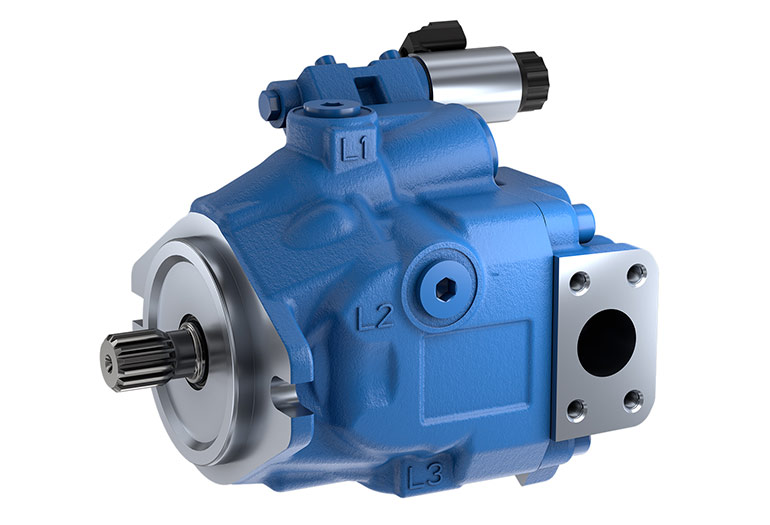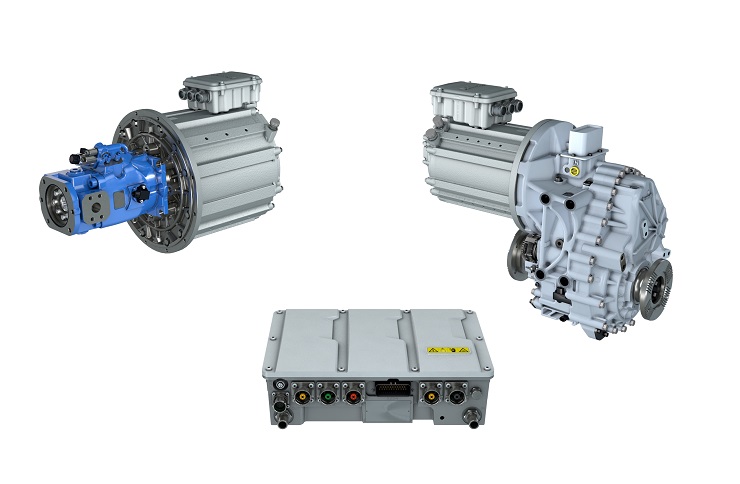There is heightened interest in optimizing the performance of mobile machines with electrohydraulic solutions, in particular with the coming need to transition from conventional machines to electrified zero-emission machinery. That’s according to Dr. Steffen Mutschler, Director Sales & Product Management Electrification of Mobile Machines at Bosch Rexroth.
In a presentation, Empowering Optimal Performance with Electro-Hydraulic Solutions, part of the recent Future of Electrification 2024 conference, hosted by the Zapi Group, he said “One topic that comes up again and again is how we can increase the machine runtime with respect to the battery capacity that is available on the machine.”
The answer, he said, is to take a full-scope approach to optimize the complete machine. To increase battery operation time, engineers must look at the different levels of the machine to improve efficiency: in the components, in complete systems, and also via dedicated software functions that raise efficiency to the maximum achievable level.
Components
To show how component efficiency can be increased, Mutschler examined Rexroth’s new A10VO Series 60 pump that is tailored for electric drives and electronic control. The product will be available in different sizes starting from 45 up to 115 cc per revolution, and it offers significantly increased performance in comparison to earlier products. The design has many specific features and improvements, he said. The housing is as small and lightweight as possible. This pump is made for electrification as well as for electronic control, with pressure and angle sensor interfaces to track displacement and performance.

Two options are classic mechanical control or electronic control, allowing flexibility for the user. Additionally, an optional pre-compression volume reduces hydraulic pulsation and noise on the machine, compared to conventional pumps.
Nominal pressure increases and rotary speed is higher, which helps raise power density with the electric drives. What does this mean for electrification? Basically, the sensors make it possible to implement power management on the machine, sharing the power to the implements and the drive train. Increased speed helps reduce the electric motor size.
But what is now most important is the relative efficiency improvement of 7% with this new series in comparison to the previous product, which in turn increases operation time by almost 7%. Thus, engineers can see a noticeable improvement just by applying these techniques to new components, said Mutschler.
Complete systems
Designers next need to look at the complete system. As an example, said Mutschler, consider a conventional wheeled excavator with a one-loop hydraulic system as a benchmark. Basically a pump and main control valve operate the cylinders as well as the slew drive. Because hydraulic consumers require many different pressure levels, this results in considerable losses in the hydraulic system.
To optimize the hydraulics one can start with improvements in areas like hose and piping, and work with flow matching to improve flow optimization. A bigger step involves separating the machine hydraulics into a two-loop system. Operating at different pressure levels generates about 20% overall efficiency improvement. Further, optimized slews with energy recovery gives an additional efficiency improvement up to 6%. Also interesting is to look into energy recovery from the boom, which in our experience shows improvements in the range of 8%, he said.
Then there are even more advanced systems. For example, a multi-pump system proposed by Purdue University offers around 40% energy savings. And multi-pressure networks studied by the University of Aachen offer savings in a similar range.
“In our example optimized excavator, we introduced a second hydraulic pump so the system operates on two different pressure levels,” he said. This reduces throttle losses on the hydraulics. As a second step, Rexroth also introduced energy recovery from the boom as well as from the slew; and introduced variable-speed on the diesel engine. All these measures achieved an overall reduction in consumption by about 40%.

The next step was to introduce electrification via Rexroth’s eLion portfolio of electric motors, inverters, onboard chargers, and dc-dc converters to set up a complete electric machine to drive the hydraulic system. With the introduction of the electric drive, it was possible to reduce the energy consumption even further. They implemented a fully independent e-slew drive to maximize the recuperation energy from the drive. “This value is quite impressive, about 46% of consumption reduction,” said Mutschler.
Software
Finally, engineers need to consider software to further improve machine efficiency, he continued. One topic that is in focus is how to operate a pump and electric motor together in the best way. There’s a lot of experience that shows if you reduce the combustion engine speed as much as is practical, it will reduce fuel consumption by about 10 to 15%. “This is the assumption that many of our customers also take into the electric machine. But a similar speed reduction on electric drives does not improve efficiency. Rather it has a negative impact on efficiency,” said Mutschler.
On a zero-emission machine, engineers need to look at the efficiency maps of the electric drive and hydraulic pump, and here we have contradicting requirements. Basically, reducing speed helps increase the efficiency of the hydraulic pump, but at the same time it reduces the efficiency of the electric drive.
To determine the “sweet spot” Rexroth has implemented an optimization algorithm in its Cytronex software package and machine control units. It looks at pump and electric motor functionality together, to control and optimize speed, displacement, flow and other critical parameters during every millisecond of operation.
This package optimizes pump and motor operation for the best efficiency (or for best dynamics, if that is the goal). With this software implemented on the controller, the system controls the electric motor via the inverter and the hydraulic pump always delivers the best flow for the relevant load conditions. In the test excavator, it shows additional efficiency improvements of about 1 to 3%.
So to increase battery operation time, engineers need to look into the selection of optimum components, into potential improvements in the complete system and, of course, understand the impact possible with software functions. In the end, with the eLion solution, in total it’s possible to significantly increase the machine operation time, said Mutschler.
Bosch Rexroth
www.boschrexroth.com
Zapi Group
www.zapigroup.com
Filed Under: Components Oil Coolers, Mobile Hydraulic Tips, Pumps & Motors, Technologies, Trending